
The history of Christian flags encompasses the establishment of Christian states, the Crusader era, and the 20th century ecumenical movement.[1]
National flags with Christian symbolism

Christian empires, such as the Kingdom of Georgia, which became a Christian state in AD 337, adopted Christian symbolism in its flag.[2] Likewise, the flags of the Byzantine Empire often depicted "a bowl with a cross, symbol[ic] of the Byzantine worldly domination for centuries and of the ecumenical mission to spread Christianity to all the world".[3]
Many officially Christian states and predominantly Christian countries have flags with Christian symbolism. Many flags used by modern nations have their roots in historical Christian flags used in historic Christian empires, such as the Byzantine Empire, or in crusader vexillology.[1]
Crusader era
In the Middle Ages, Christian flags bore various types of Christian crosses.[4] Military orders of Christian knights used these crosses in their flags. For example, the Knights Hospitaller (Knights of Malta) used and continue to use a Maltese cross in their flags.[4]
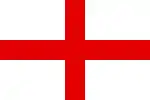 Flag of the French crusaders and the Order of Saint George
Flag of the French crusaders and the Order of Saint George Flag of the English crusaders
Flag of the English crusaders Flag of the Italian crusaders
Flag of the Italian crusaders Flag of the Flemish crusaders
Flag of the Flemish crusaders Flag of the Breton crusaders
Flag of the Breton crusaders Flag of the Gascon crusaders
Flag of the Gascon crusaders.svg.png.webp) Flag of the German crusaders, then used as the war flag of the Holy Roman Empire
Flag of the German crusaders, then used as the war flag of the Holy Roman Empire.svg.png.webp) Flag of the Danish crusaders
Flag of the Danish crusaders Flag of the crusader army of György Dózsa
Flag of the crusader army of György Dózsa.svg.png.webp) Flag of the Knights Hospitaller (Sovereign Military Order of Malta)
Flag of the Knights Hospitaller (Sovereign Military Order of Malta) Variant flag of the Knights Hospitaller (Sovereign Military Order of Malta)
Variant flag of the Knights Hospitaller (Sovereign Military Order of Malta) Flag of the Knights Templar
Flag of the Knights Templar Flag of the Teutonic Order
Flag of the Teutonic Order Flag of the Order of Saint Lazarus
Flag of the Order of Saint Lazarus Flag of the Order of the Holy Sepulchre
Flag of the Order of the Holy Sepulchre Flag of the Kingdom of Jerusalem
Flag of the Kingdom of Jerusalem Flag of Marseille also has its origins in the Crusader era
Flag of Marseille also has its origins in the Crusader era Flag of the Kingdom of Cyprus
Flag of the Kingdom of Cyprus Flag of the Galleys of the Order of Saint Stephen
Flag of the Galleys of the Order of Saint Stephen Flag of the County of Tripoli
Flag of the County of Tripoli
Flags of Christian denominations
Many Christian denominations have their own denominational flag and display it alongside the ecumenical Christian Flag or independent from it.[5]
Catholic Churches in communion with the Holy See often display the Vatican flag along with their respective national flag, typically on opposite sides of the sanctuary, near the front door, or hoisted on flagstaffs outside. Individual dioceses may also fly flags based on the diocesan coat of arms.
The Eastern Orthodox Church tradition, particularly jurisdictions of the Greek Orthodox Church under the direct authority of the Ecumenical Patriarch, often displays this flag. It is a Byzantine double-headed eagle on a yellow (Or) field.
Parishes in the Episcopal Church frequently fly the Episcopal flag, a Cross of St. George with the upper-left canton containing a Cross of St. Andrew formed by nine cross-crosslets (representing the nine original dioceses) on a blue background.
The Salvation Army has a flag with a blue border (symbolizing the purity of God the Father), a red field (symbolizing the blood of Jesus Christ), and a gold eight-pointed star (symbolizing the fire of the Holy Spirit). The star bears the Salvation army's motto, "Blood and Fire".
The Anglican Communion has a blue flag with a St George's Cross in the centre surrounded with a gold band with the wording, "The Truth shall make you free." in New Testament Greek on it. From the band sprout the points of a compass (symbolising the spread worldwide of Anglicanism). On the "North" of the compass is a mitre (a symbol of apostolic order essential to all Churches and Provinces constituting the Anglican Communion).
The Church of England uses the St George's Cross flag with the coat of arms of the individual diocese in the upper-left canton.
The Church of Scotland uses a Flag of Scotland depicting the Burning Bush (or Unburnt Bush, in some traditions).
The Church in Wales uses a blue Cross defaced with a gold Celtic Cross.
The Church of Ireland uses the St Patrick's Saltire but also uses the Compass-rose Flag of the Anglican Communion equally.
The Protestant Church in Germany, a federation of Lutheran, Reformed and United Protestant churches, has a flag with a violet Latin cross.
Additionally, many Catholic, Protestant and Orthodox churches maintain the use of the Labarum, a historical symbol of Christianity, which is rarely used as a flag at present.
.svg.png.webp)
 Flag of the Greek Orthodox Church
Flag of the Greek Orthodox Church Flag of the Georgian Orthodox Church
Flag of the Georgian Orthodox Church Flag of the Episcopal Church
Flag of the Episcopal Church Flag of the Serbian Orthodox Church
Flag of the Serbian Orthodox Church Flag of the Armenian Apostolic Church
Flag of the Armenian Apostolic Church Standard of The Salvation Army
Standard of The Salvation Army

 Flag of the Church of Scotland
Flag of the Church of Scotland Flag of the Church of Ireland
Flag of the Church of Ireland Flag of Anglican Church of Australia
Flag of Anglican Church of Australia Flag of the Anglican Church of Canada
Flag of the Anglican Church of Canada Flag of the Protestant Church in Germany
Flag of the Protestant Church in Germany Flag of the Protestant Church in Germany (alternative version)
Flag of the Protestant Church in Germany (alternative version) Flag of the Church of Sweden
Flag of the Church of Sweden
Christian Flag adopted by the Federal Council of Churches

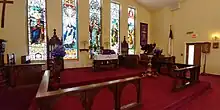
.jpg.webp)
In the beginnings of ecumenical movement in the late 19th and early 20th centuries,[6] the Christian Flag was first conceived on 26 September 1897, at Brighton Chapel on Coney Island in Brooklyn, New York in the United States. The superintendent of a Sunday school, Charles C. Overton, gave a lecture to the gathered students and asked the students what an ecumenical flag representing all of Christianity would look like.[7] In 1907, Overton and Ralph Diffendorfer, secretary of the Methodist Young People's Missionary Movement, designed and began promoting the flag.[8] The Christian Flag intentionally has no patent, as the designer dedicated the flag to all of Christendom.[9] With regard to the Christian symbolism of the Christian Flag:
The ground is white, representing peace, purity and innocence. In the upper corner is a blue square, the color of the unclouded sky, emblematic of heaven, the home of the Christian; also a symbol of faith and trust. in the center of the blue is the cross, the ensign and chosen symbol of Christianity: the cross is red, typical of Christ's blood.[7]
The ecumenical organization, Federal Council of Churches, now succeeded by the National Council of Churches and Christian Churches Together, adopted the flag on 23 January 1942.[10] Since then, the Christian Flag is used by many congregations of various Christian traditions, including the Anglican,[11][12] Baptist,[13] Congregationalist,[14][15] Lutheran,[16] Mennonite,[17] Methodist,[18] Moravian,[19] Presbyterian,[20] Quaker,[21] and Reformed, among others.[22]
The famous hymn writer, Fanny J. Crosby, devoted a hymn titled “The Christian Flag”, with music by R. Huntington Woodman, in its honour;[10] like the flag, the hymn is also free use.[23] On the Sunday nearest 26 September 1997, the Christian Flag celebrated its one hundredth anniversary.[24]
See also
References
- 1 2 Lovette, Leland Pearson (1934). Naval Customs, Traditions and Usage. United States naval institute. p. 152.
- ↑ Demski, Eric (30 June 2014). Living by the Sword: Knighthood for the Modern Man. Trafford Publishing. p. 511. ISBN 9781490736082.
- ↑ Rocha, Luiz (2009). Mount Athos. p. 19. ISBN 9781440117534.
- 1 2 Islam di Borneo. Universiti Teknologi MARA. 2009. p. 164. ISBN 9789673052943.
The medieval Christian flags with different kinds of crosses (Latin, Templars, St. John's or arrow-head cross', St. Andrew's or saltire, 'nailed", etc.) linked the knights with the church. It was a religious symbol of Christian 'holy wars' or crusades which invigorated and united the enemies of Islam.
- ↑ Christian Flag Facts, Montney.
- ↑ Sanneh, Lamin; McClymond, Michael (23 May 2016). The Wiley Blackwell Companion to World Christianity. John Wiley & Sons. p. 218. ISBN 9781405153768.
- 1 2 "Christian Flag". The Christian Advocate. New York: T. Carlton & J. Porter. 84. 7 January 1909.
Within recent years (1897) a flag has been designed which shall stand as an emblem; (Jesse L. Jones-McKay) which all Christian nations and various denominations may rally in allegiance and devotion. This banner is called the Christian flag. It was originated by Charles C. Overton of Brooklyn, N.Y., whose first thought of it came to him while addressing a Sunday school at a rally day service. The flag is most symbolic. The ground is white, representing peace, purity and innocence. In the upper corner is a blue square, the color of the unclouded sky, emblematic of heave, the home of the Christian; also a symbol of faith and trust. in the center of the blue is the cross, the ensign and chosen symbol of Christianity: the cross is red, typical of Christ's blood. The use of the national flag in Christian churches has become almost universal throughout the world.
- ↑ Coffman, Elesha. "Do you know the history of the Christian flag?". Christianity Today. Retrieved 24 April 2014.
- ↑ "Christian Flag". The Christian Advocate. New York: T. Carlton & J. Porter. 84. 7 January 1909.
Mr. Overton has dedicated his flag to the Christian world, refusing to copyright or patent it. It stands for no creed or denomination, but for Christianity. Every sect of Christ's followers can indorse this flag and it is equally appropriate for all nations. The hymn written by Fanny Crosby is also dedicated to the free use and followers of Christ the world over.
- 1 2 "Resolution". Federal Council Bulletin. Religious Publicity Service of the Federal Council of the Churches of Christ in America. 25–27. 1942.
- ↑ Baptistry. Episcopal Diocese of Fort Worth: Saint John’s Episcopal Church. Retrieved 23 September 2021.
The Christian flag indicates that through baptism man shares in this divine victory over evil and eternal death.
- ↑ Kelland, Ariana; Howells, Laura (March 23, 2016). "Controversial Christian flag removed as provincial, national flags flown at half-mast". CBC News. Retrieved January 2, 2020.
Rev. Howard Hynes is the pastor at St. Stephen the Martyr Anglican Network Church, which organized the flag raisings.
- ↑ Grose, Howard Benjamin (1917). Missions: American Baptist International Magazine. American Baptist Convention. p. 49.
Side by side in many of our churches hangs the Christian Flag with the Stars and Stripes—the Flag of White— which forever has stood for peace, having in the corner on the field of blue, the color of sincerity, faith and truth, the red Cross symbolic of Calvary.
- ↑ Flick, Stephen (24 September 2020). "Why We Fly the Christian Flag". Christian Heritage Fellowship. Retrieved 23 September 2021.
- ↑ Miller, Nathan (4 July 2020). "We Have 2 Flags in our Sanctuary". Greeley: First Congregational Church. Retrieved 23 September 2021.
On the other side of the sanctuary is a Christian flag.
- ↑ "WELS Flag Presentation" (PDF). Wisconsin Evangelical Lutheran Synod. Retrieved 23 September 2021.
- ↑ Lind, Hope Kauffman (1 January 1990). Apart & Together: Mennonites in Oregon and Neighboring States, 1876-1976. Herald Press. p. 277. ISBN 9780836131062.
Most congregations of Russian Mennonite heritage displayed both the national and the Christian flag in the church sanctuary.
- ↑ Trewhitt, Katharine L. (1984). History of Broad Street United Methodist Church, Cleveland, Tennessee, 1836-1984: The Story of Methodism in Bradley County and of the Group which Became Broad Street United Methodist Church. The Church. p. 129. Retrieved 8 July 2017.
In 1968 the Methodist Men of Broad Street purchased flags to be used in the sanctuary of the Church. This involved one United States flag, one Christian flag, flag poles, stands, one eagle and one cross.
- ↑ Aalberts, Leon (2021). "Flags in the Sanctuary" (PDF). Williamstown: First Congregational Church. p. 5. Retrieved 23 September 2021.
Since its adoption by the United States Federal Council of Churches in 1942, it has been used by many Christian traditions, including the Anglican, Baptist, Lutheran, Mennonite, Methodist, Moravian, Presbyterian, Quaker, and Reformed, among others.
- ↑ Achtemeier, Katherine (1 July 2016). "Flags in worship". The Presbyterian Outlook. Retrieved 23 September 2021.
For as long as anyone could remember, the American flag had been displayed in the front of the sanctuary to the congregation's left — to their right, the Christian flag.
- ↑ Roberts, Arthur O. (1978). Tomorrow Is Growing Old: Stories of the Quakers in Alaska. Barclay Press. p. 446. ISBN 9780913342220. Retrieved 8 July 2017.
- ↑ Schuppert, Mildred W. (1982). A Digest and Index of the Minutes of the General Synod of the Reformed Church in America, 1906-1957. Wm. B. Eerdmans Publishing. p. 105. ISBN 9780802819437.
- ↑ The Quiver. Cassell Limited. 1900. p. 380. Retrieved 4 May 2014.
Miss Fanny J. Crosby, the veteran American hymn writer, has dedicated a hymn, called "The Christian Flag," to the movement, the first verse of which is :— " The Christian Flag!
- ↑ James R. Pollock, Ph.D., D.D. (23 March 1996). Congratulations to The Christian Flag (Fourth ed.).
{{cite book}}: CS1 maint: multiple names: authors list (link)

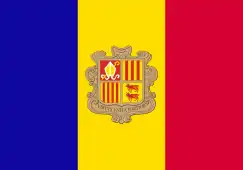










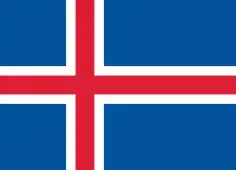


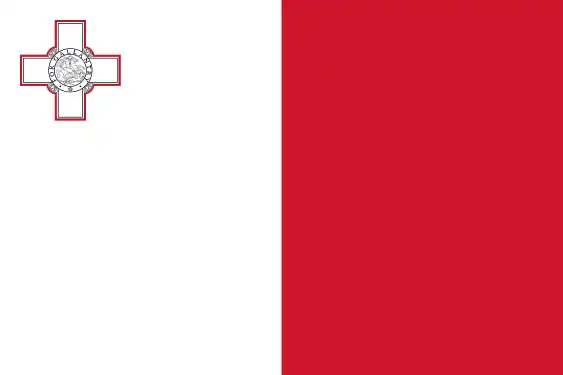
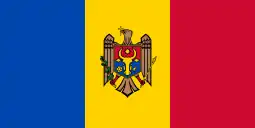
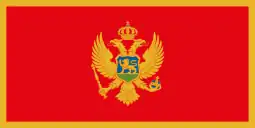



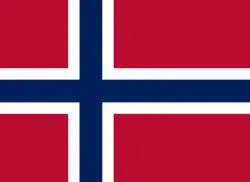


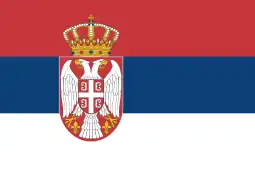
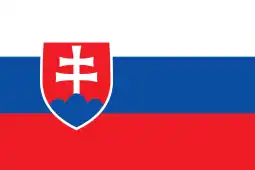





.svg.png.webp)
.svg.png.webp)